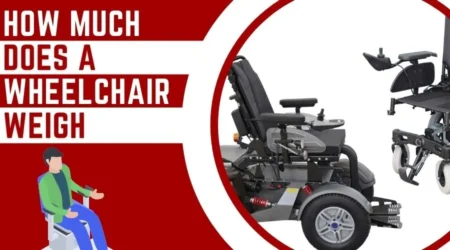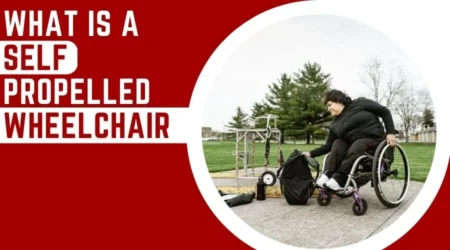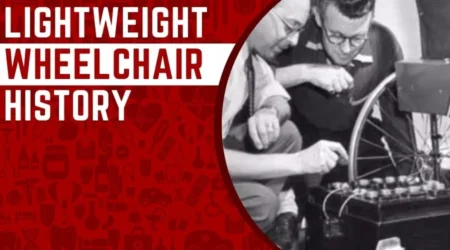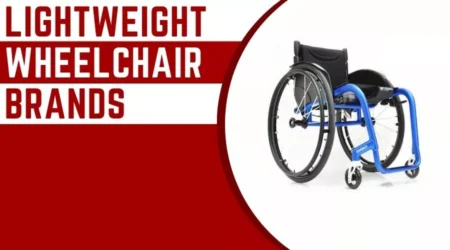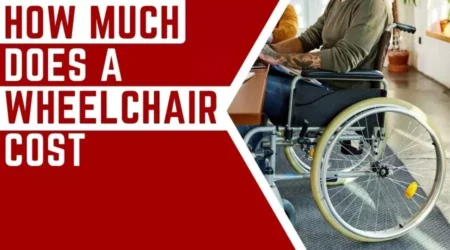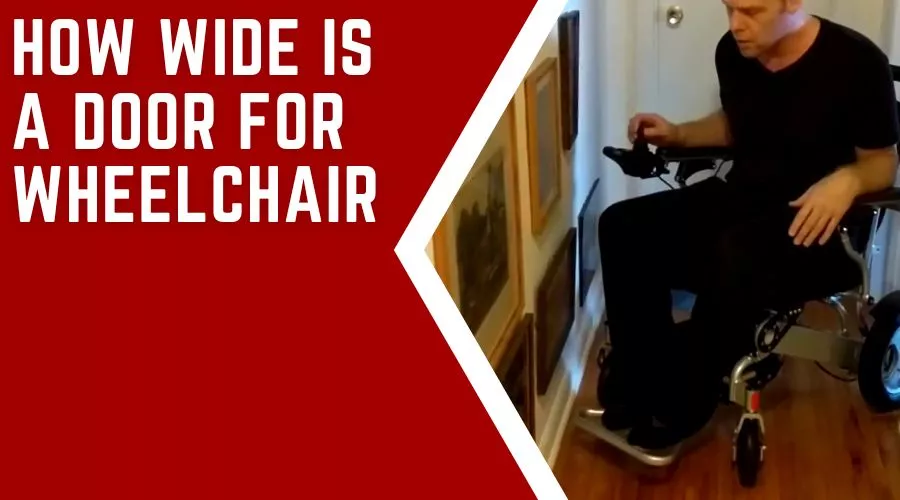
How wide is a door for wheelchair access?
If you have wondered about this question then You’re not alone! This question seems simple, but when it comes to doors and wheelchairs, things get tricky pretty quickly!
Most Americans use the term wheelchair to refer to a mobility device used by individuals with limited or no ability to walk, but in reality, wheelchairs come in many shapes and sizes.
As such, the potential wheelchair user may have no problem walking at all but may need help getting from place to place due to an injury or illness, such as multiple sclerosis (MS).
In these cases, the answer to the question is how wide a door needs to be for wheelchair access would be different than if you were referring to someone in an electric scooter or seated in a walker.
How Wide Is A Door For Wheelchair Access?
What is the Americans with Disabilities Act (ADA)?
ADA is the Americans with Disabilities Act, a set of laws passed in 1990 that protect the rights of disabled individuals.
The ADA prohibits discrimination against people with disabilities in all areas of public life, including employment, education, transportation, and access to public facilities.

The ADA has helped countless people with disabilities lead more independent lives by ensuring that they have equal access to opportunities and services.
ADA Requirements to have a door for wheelchair users
There are many requirements for doors that need to be followed in order to make them accessible for wheelchair users.
The Americans with Disabilities Act (ADA) has very specific guidelines that must be met in order for a door to be considered compliant. Some of these requirements include:
- The door must be at least 32 inches wide.
- The door handle must be no higher than 48 inches from the ground.
- The door must have an automatic opener if it is heavier than 60 pounds.
In response to these standards, the ADA suggests that doors have enough clearance to open and close freely.
This clearance is usually referred to as the ” maneuvering clearance.”
The maneuvering clearances are measured from the leading edge of the door to any obstacles that might be in the way.
These clearances are as follows:
- There must be a clearance of at least 32 inches if the door is opened manually.
- There must be a clearance of at least 48 inches if the door is opened automatically.
If you are unsure whether or not your doors meet the ADA requirements, it is always best to consult with a professional.
They’ll be able to examine your unique scenario and ensure that your doors are in good working order.
Making sure that your doors meet the ADA requirements is important not only for compliance purposes but also for making sure that everyone can use them safely and comfortably.
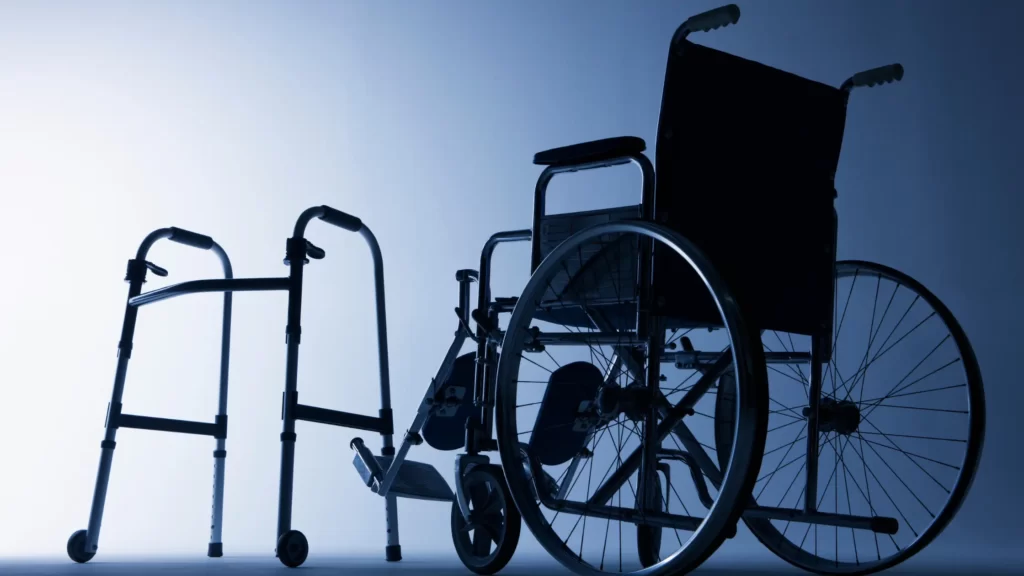
While these are just some of the basic requirements, there are many other factors to consider when making doors accessible for wheelchair users.
Types of Doors For Wheelchairs Users
There are many types of doors that can be used by wheelchair users.
Automatic Doors:
The most common type is the automatic door. These doors have sensors that open the door automatically when someone in a wheelchair approaches them.
Manual Doors:
There are also manual doors that can be opened by someone in a wheelchair using a handle or lever. Some manual doors also have an automatic opener, which can be activated by pressing a button or waving a hand in front of the door.
Sliding Doors:
Another type of door that can be used by wheelchair users is the sliding door. These doors slide open and closed on a track.
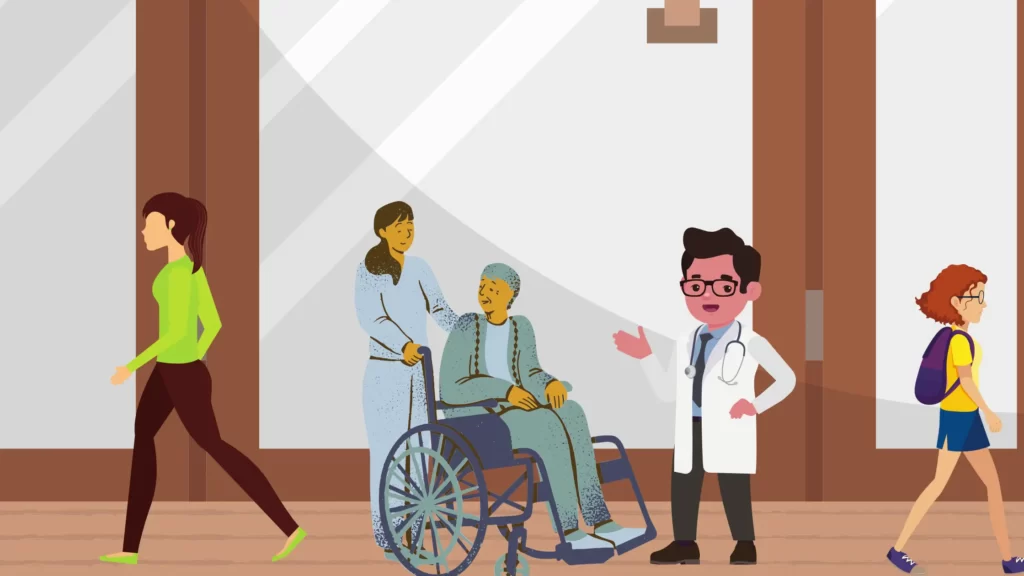
They can be opened manually or with an automatic opener. Sliding doors are often used in places where there is not enough space for a swinging door to open fully, such as in a bathroom.
Bi-Fold Doors:
There are also doors that fold open like accordions. These doors are called bi-fold doors. They can be opened and closed manually or with an automatic opener.
Bi-fold doors are often used in places where there is not enough space for a swinging door to open fully, such as in a closet.
Revolving Doors:
Wheelchair users can also use revolving doors. Revolving doors have sections that rotate around a central axis. They can be opened and closed manually or with an automatic opener.
Revolving doors are used in places where there is high traffic, such as in a hospital or office building lobby.
Tips For Making Doors Wheelchair Accessible
There are several things you can do to make your door more wheelchair-friendly.
How to know if a door is wide enough for wheelchair access?
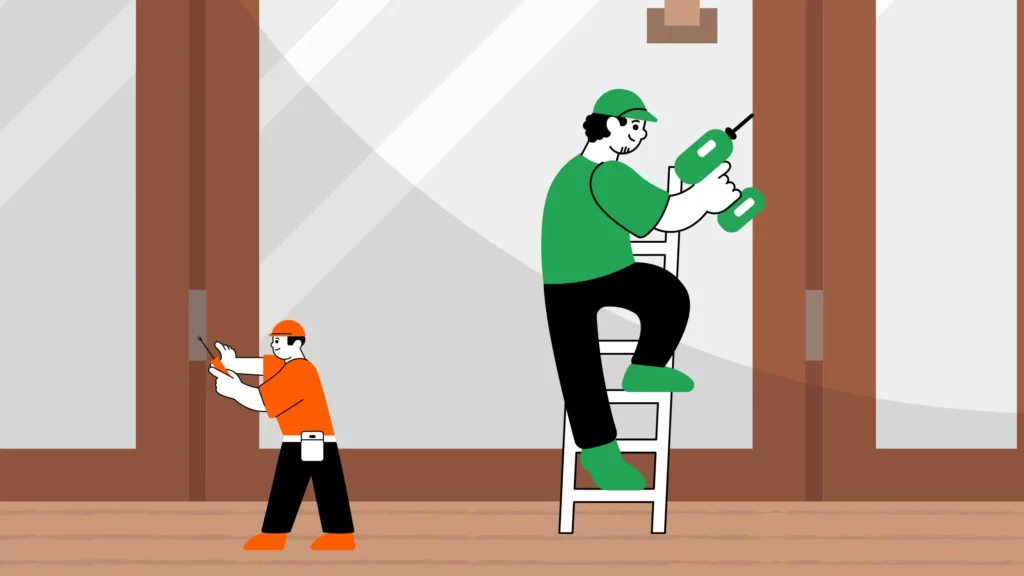
You can assess if a door is broad enough for wheelchair access by looking for a few items.
If you are looking for a door to be accessible for all, keep these things in mind. With a little bit of research, you can find the perfect door for your needs.
Some Common Obstacles that people with disabilities face
Here are some common obstacles that people with disabilities face while accessing the building:
Lack of Ramps:
Many wheelchair users are unable to access buildings because there is no ramp leading up to the entrance. This can be a problem for wheelchair users who are trying to visit a friend’s house, go to a job interview, or even just run errands.
Doors that are too narrow:
Another common obstacle that wheelchair users face is doors that are too narrow. This can make it difficult or even impossible for someone in a wheelchair to get through the door.
Elevators that are out of service:
If an elevator is out of service, it can make it very difficult for someone in a wheelchair to get around a building. This can be especially frustrating if the only way to access the upper floors of a building is through the elevator.
Parking:
Parking can be a challenge for wheelchair users, as many parking lots are not designed with accessibility in mind. This can make it difficult to find a spot that is close to the entrance of a building or even to find a spot that is accessible for someone in a wheelchair.
These are just some of the common obstacles that wheelchair users face when trying to access buildings. While these obstacles can be frustrating, there are ways to overcome them.
For example, many cities now have laws that require businesses to have ramps leading up to their entrances.
There are other groups dedicated to improving accessibility for people with impairments.
If you encounter any of these obstacles, remember that you are not alone and there are people who can help you overcome them.
Conclusion:
Wheelchair users have different needs than those who are able-bodied.
Making your business accessible to everyone is not only the right thing to do, but it can also be good for your bottom line.
By understanding how wide a door for wheelchair users should be, you can make simple changes that will open your business up to a whole new market segment.
Have you made your business wheelchair-friendly? If not, now is the time to start thinking about how you can make some simple changes that will allow everyone access to your products and services.
Frequently Asked Questions
Can a wheelchair go through a 32-inch door?
The Americans with Disabilities Act (ADA) makes the following suggestions: A door must be at least 32″ wide and up to 48″ wide to accommodate most wheelchairs. (36″ is required in all cases.) A door should be 80 inches tall.
Can a wheelchair get through a 30-inch door?
The answer is maybe, depending on the wheelchair. If the wheelchair is a manual wheelchair, then the person using it will need to have enough strength to push the wheelchair through the door.
If the wheelchair is an electric wheelchair, then the person using it will need the battery to be charged so that the wheelchair will fit through the door.
Some electric wheelchairs can fold up, which makes them easier to get through doors.
How do you make a wheelchair-accessible doorway?
The wheelchair must be able to pass through the doorway, so help ensure it is wide enough. The next step is to install a ramp. The ramp should be long enough so that the wheelchair can safely get up and down the ramp. The last step is to install handrails.
How wide are ADA doors?
The majority of store and business entrances have 36-inch wide doors that are easily accessible. Some older doors are less than 36 inches wide and may not be sufficient (32-inch clear width when fully opened). Doorways can occasionally be made larger.
What is the width of a standard-size wheelchair?
The following is a plan view of a person in a wheelchair: The wheelchair’s width, measured from the outside of the back wheels, are 26 inches (660 mm).
From the back of the rear wheels to the front of the footrests, the wheelchair measures 42 inches (1065 mm).
What is the turning radius for a wheelchair?
The turning radius of a wheelchair is the distance that the wheelchair needs to be from an object in order for the person in the wheelchair to be able to turn around and face the object. The turning radius is important for wheelchair users because it determines how much space they need to maneuver in order to turn around.
How wide should a door be for a walker?
A general rule of thumb is that the door should be at least 36 inches wide. If the person using the walker is larger or needs more space to maneuver, then a wider door may be necessary. If it is too high or low, it can be difficult for someone in a wheelchair or walker to reach. The handles should also be easy to grip and turn.
How do I widen my bathroom door for a wheelchair?
There are a few ways that you can widen your bathroom door for a wheelchair. One way is to install a wider door frame. Another way is to replace the existing door with a wider one. You can also remove the trim around the door so that the wheelchair can fit through more easily.
You can add a ramp to the outside of the door so that the wheelchair can be rolled up and into the bathroom. By taking some or all of these measures, you can make your bathroom much more accessible for someone who uses a wheelchair.
What is the minimum ADA aisle width?
This entails removing clutter, repositioning furniture, and making aisles broad enough so there are no obstacles to entry. To allow a general wheelchair to travel through, the minimum width of a clear aisle should be 32 inches or more.


